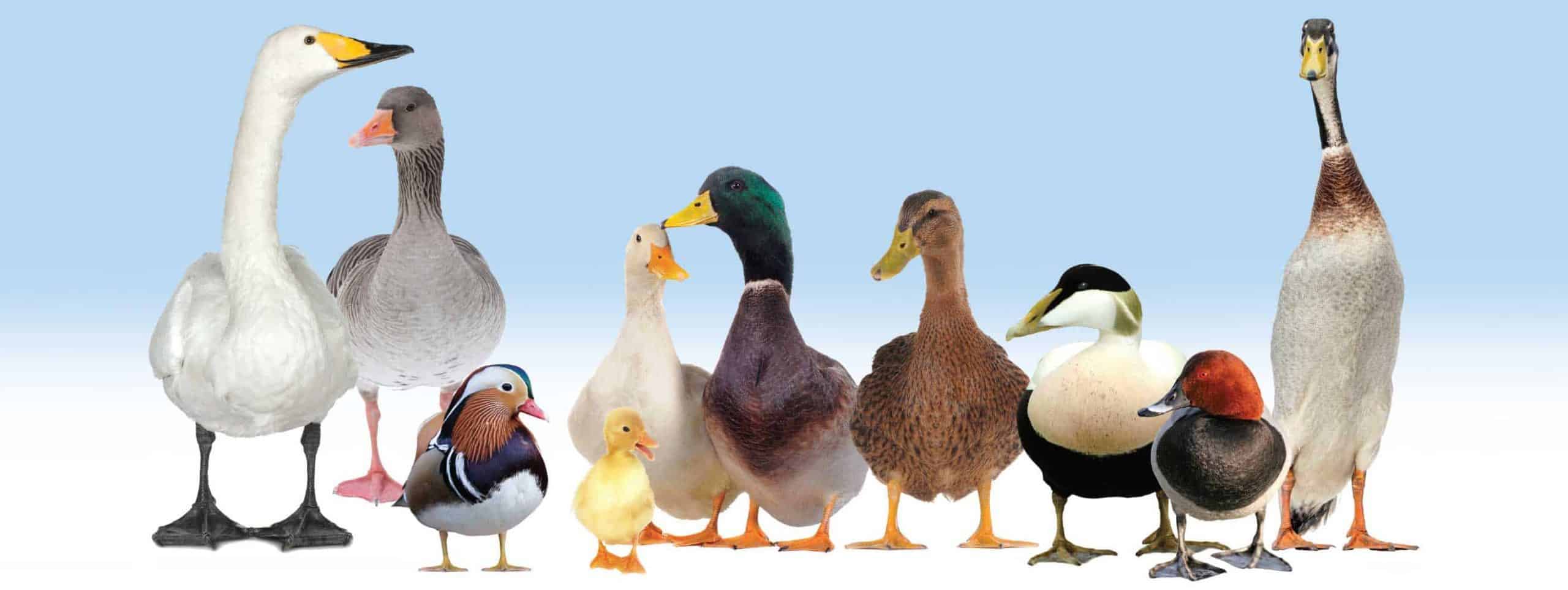Eurasian Wigeon
Eurasian Wigeon pair — oil painting by Philippa Mitchell Eurasian Wigeon duck — Morag Jones Eurasian Wigeon are exclusively vegetarian, and do best where they have access to grazing — the short, stubby beak is ideally suited to cropping grass. They make excellent lawnmowers, so are ideal for keeping lawns in an enclosure short and […]
Common Goldeneye
Common Goldeneye displaying — Jed Dwight There are two subspecies of Common Goldeneye recognised: European B. c. clangula – of Scandinavia and central Europe, through Russia to Kamchatka, wintering further east, including Great Britain. American B. c. americana – of Alaska to Newfoundland; winters from Aleutian Islands and Newfoundland, throughout North America. See also the […]
Barrow’s Goldeneye
Barrow’s Goldeneye — Jan Harteman Barrow’s Goldeneye — Morag Jones Sometimes reluctant to breed, these sea ducks are far less common in our collections than our European subspecies of Common Goldeneye B. c. clangula. Birds are mature at two years old. The most successful breeders are those with fresh, clear, cool water. Bucephala islandica First described […]
Cape Teal
Cape Teal family — Morag Jones Distribution of the Cape Teal is throughout South Africa except the easternmost part. They move about according to rainfall and seasonal conditions. They will frequent large and small areas of water and marshes, in open and savannah country; also often found around salt lakes. Cape Teal — Will Costa […]
Chiloé Wigeon
Chiloé Wigeon — Alex Levitskiy The distribution of the Chiloé Wigeon is South America, from Southern Brazil, Uruguay, Paraguay, northern Argentina and central Chile to Tierra del Fuego and the Falkland Islands. It is a fresh water bird, frequenting lakes and marshes, preferring open waters. Chiloé Wigeon — Darren Williamson Mareca sibilatrix The Chiloé Wigeon is […]
Common Eider
Common Eider pair — Martin Garwood There are six subspecies of Common Eider recognised: Pacific S. m. v-nigrum — of north east Siberia to north west North America; wintering Bering Sea and Aleutian Islands. Northern S. m. borealis — of the Arctic Atlantic; wintering around north Atlantic coasts as far as the Gulf of St […]
American Black Duck
American Black Duck — Ian Gereg It is the bold assertion of early historians of the domestic Cayuga Duck that there may be American Black Duck blood in the heritage of this breed. The drake does not have a tail-curl and hunters prize the Black Duck as it presents a challenge — supposedly more cunning […]
African Comb Duck
African Comb drake — Pinola Conservancy The African Comb Duck tends to be the one most common in North American collections; conversely the smaller American Comb Duck is favoured in European aviculture. African Comb ducklings — Pinola Conservancy Sarkidiornis melanotos Very slightly larger than their American cousins, the African Comb Ducks are heavily built ducks of […]
American Comb Duck
American Comb Duck – Will Costa American Comb Duck family – Pinola Conservancy Sarkidiornis sylvicola Very slightly smaller than their Old World cousins, the American Comb Ducks are heavily built ducks of wooded wetlands. Sexes are easily distinguishable. Males are much larger than females, and have a very large, black knob on the top of the […]
Orpington
Buff Orpingtons — BWA The Orpington Duck is included on the RBST‘s watchlist of traditional breeds of poultry. In recent years, the number of Orpingtons being kept has declined. RBST considers this to be one of the duck breeds at greatest risk of being lost. Buff Orpington drake — Brandon Brockett Buff Orpington drake — […]


